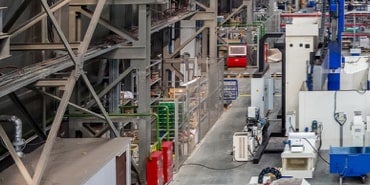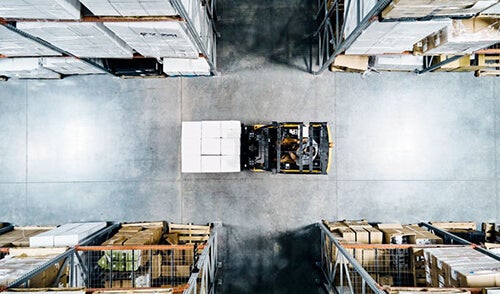Disruption Is Here to Stay
To get ahead of supply chain disruption, we first need to understand its causes. At a high level, the risks of today are rooted in manufacturing improvements that became popular in the 1970s. Just-in-Time(JIT) manufacturing — used by companies such as Apple, IBM, Toyota, and many others — has become a dominant method for the production of goods. The process, which prioritizes speed and agility at the cost of stored inventory, reduced labor costs and the need for storage capacity. Unfortunately, without a reserve of goods, manufacturers using this system are less able to weather delays in shipping, part shortages, or worker absences.Top Supply Chain Risks
The pandemic naturally exploited these weaknesses, but COVID-19 isn’t the only risk to global supply chains:- Climate Change: Relatively predictable weather patterns have become unstable, resulting in more natural disasters, more ferocious storms occurring more often, and less dependable supply chains.
- Geopolitics: Economic penalties are the first response when punishing a wide array of state actions such as human rights violations (China), military aggression (Russia), or undemocratic governing (North Korea, Venezuela, etc). Sanctions and tariffs can eliminate a suppliers’ viability almost overnight.
- Regulations: Governments around the world are more strictly enforcing regulatory requirements to promote domestic manufacturing resilience, raising the stakes for manufacturers and suppliers that have yet to adopt robust compliance programs.
- Consumer Pressure: There’s more scrutiny on the business practices than ever before, and if your suppliers are implicated in unethical practices, boycotts or negative news attention can make those relationships costly.
- Cybersecurity: Ransomware attacks affect more than personal computers. Businesses and even governments can see widespread delays or stoppages if their cyber defenses are infiltrated.
Assent helps you dive deep into your supply chain to find hidden risks so you can steer through uncertainty. Learn how in our Assent Solution Guide.
Of course, this isn’t an exhaustive list of potential supply chain disruptions and not every event is avoidable. For example, in 2021, a sideways boat in the Suez Canal disrupted global supply chains for weeks. Still, for the majority of instances, a deeper, more transparent view of manufacturing supply chains will provide agility and resiliency to manufacturers.










